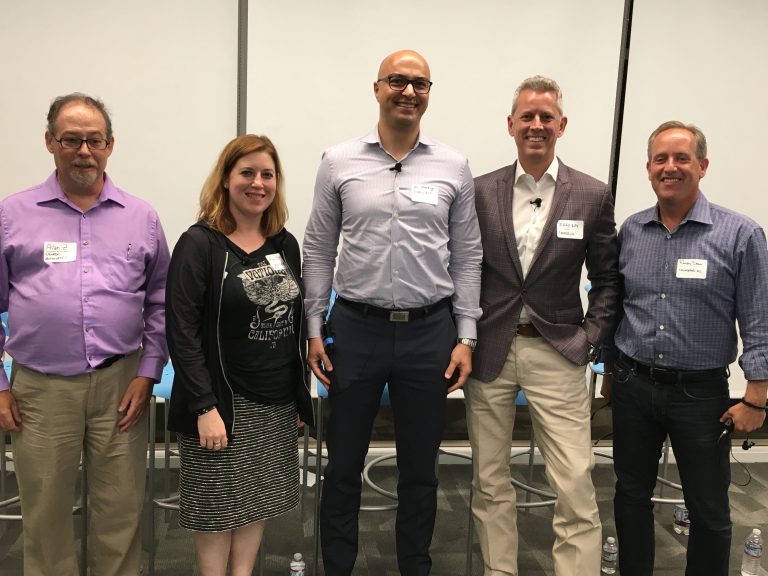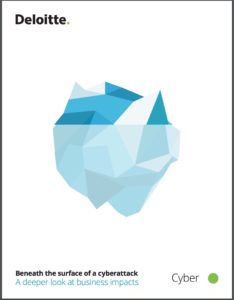 On February 7, 2018, the carrier Swisscom admitted that a security lapse revealed sensitive information about 800,000 customers was exposed. The security failure was at one of Swisscom’s sales partners.
On February 7, 2018, the carrier Swisscom admitted that a security lapse revealed sensitive information about 800,000 customers was exposed. The security failure was at one of Swisscom’s sales partners.
This is what can happen when a business gives its partners access to critical data. The security chain is only as good as the weakest link – and it can be difficult to ensure that partners are taking sufficient care, even if they pass an onboarding audit. Swisscom says,
In autumn of 2017, unknown parties misappropriated the access rights of a sales partner, gaining unauthorised access to customers’ name, address, telephone number and date of birth.
That’s pretty bad, but what came next was even worse, in my opinion. “Under data protection law this data is classed as ‘non-sensitive’,” said Swisscom. That’s distressing, because that’s exactly the sort of data needed for identity theft. But we digress.
Partners and Trust
Partners can be the way into an organization. Swisscom claims that new restrictions, such as preventing high-volume queries and using two-factor authentication, mean such an event can never occur again, which seems optimistic: “Swisscom also made a number of changes to better protect access to such non-sensitive personal data by third-party companies… These measures mean that there is no chance of such a breach happening again in the future.”
Let’s hope they are correct. But in the meantime, what can organizations do? First, Ensure that all third parties that have access to sensitive data, such as intellectual property, financial information, and customer information, go through a rigorous security audit.
Tricia C. Bailey’s article, “Managing Third-Party Vendor Risk,” makes good recommendations for how to vet vendors – and also how to prepare at your end. For example, do you know what (and where) your sensitive data is? Do vendor contracts spell out your rights and responsibilities for security and data protection – and your vendor’s rights and responsibilities? Do you have a strong internal security policy? If your own house isn’t in order, you can’t expect a vendor to improve your security. After all, you might be the weakest link.
Unaccustomed to performing security audits on partners? Organizations like CA Veracode offer audit-as-a-service, such as with their Vendor Application Security Testing service. There are also vertical industry services: the HITRUST Alliance, for example, offers a standardized security audit process for vendors serving the U.S. healthcare industry with its Third Party Assurance Program.
Check the Back Door
Many vendors and partners require back doors into enterprise data systems. Those back doors, or remote access APIs, can be essential for the vendors’ performing their line-of-business function. Take the Swisscom sales partner: It needs to be able to query Swisscom customers and add/update customer information, in order to effectively serve as as a sales organization.
Yet if the partner is breached, that back door can fall under the control of hackers, using the partner’s systems or credentials. In its 2017 Data Breach Investigations Report, Verizon reported that in regard to Point-of-Sale (POS) systems, “Almost 65% of breaches involved the use of stolen credentials as the hacking variety, while a little over a third employed brute force to compromise POS systems. Following the same trend as last year, 95% of breaches featuring the use of stolen credentials leveraged vendor remote access to hack into their customer’s POS environments.”
A Handshake Isn’t Good Enough
How secure is your business partner, your vendor, your contractor? If you don’t know, then you don’t know. If something goes wrong at your partners’ end, never forget that it may be your IP, your financials, and your customers’ data that is exposed. After all, whether or not you can recover damages from the partner in a lawsuit, your organization is the one that will pay the long-term price in the marketplace.







 Software can affect the performance of hardware. Under the right (or wrong) circumstances, malware can cause the hardware to become physically damaged – as the cyberattack on Iran’s centrifuges provided in 2010, and which an errant coin-mining malware is demonstrating right now. Will intentional or unintentional damage to IoT devices be next?
Software can affect the performance of hardware. Under the right (or wrong) circumstances, malware can cause the hardware to become physically damaged – as the cyberattack on Iran’s centrifuges provided in 2010, and which an errant coin-mining malware is demonstrating right now. Will intentional or unintentional damage to IoT devices be next? Man-in-the-Middle (MITM or MitM) attacks are about to become famous. Famous, in the way that ransomware, Petya, Distributed Denial of Service (DDoS), and credit-card skimmers have become well-known.
Man-in-the-Middle (MITM or MitM) attacks are about to become famous. Famous, in the way that ransomware, Petya, Distributed Denial of Service (DDoS), and credit-card skimmers have become well-known. Criminals steal money from banks. Nothing new there: As Willie Sutton famously said, “I rob banks because that’s where the money is.”
Criminals steal money from banks. Nothing new there: As Willie Sutton famously said, “I rob banks because that’s where the money is.” Law enforcement officials play a vital role tracking down and neutralizing cyber criminals. Theirs is a complex, often thankless, mission. Here are some insights shared by two current, and one former, high-level officials from U.S. law enforcement, who spoke at the
Law enforcement officials play a vital role tracking down and neutralizing cyber criminals. Theirs is a complex, often thankless, mission. Here are some insights shared by two current, and one former, high-level officials from U.S. law enforcement, who spoke at the 
 Ransomware is genuine, and is threatening individuals, services, schools, medical facilities, governments – and there’s no indication that ransomware is stopping. In fact, it’s probably increasing. Why? Let’s be honest: Ransomware is probably the single most efficient attack that hackers have ever created. Anybody can develop ransomware utilizing easily available tools; any cash received is likely in untraceable Bitcoin; and if something goes wrong with decrypting someone’s disk drive, the hacker isn’t impacted.
Ransomware is genuine, and is threatening individuals, services, schools, medical facilities, governments – and there’s no indication that ransomware is stopping. In fact, it’s probably increasing. Why? Let’s be honest: Ransomware is probably the single most efficient attack that hackers have ever created. Anybody can develop ransomware utilizing easily available tools; any cash received is likely in untraceable Bitcoin; and if something goes wrong with decrypting someone’s disk drive, the hacker isn’t impacted. I unlock my smartphone with a fingerprint, which is pretty secure. Owners of the new Apple iPhone X unlock theirs with their faces –
I unlock my smartphone with a fingerprint, which is pretty secure. Owners of the new Apple iPhone X unlock theirs with their faces –  The secret sauce is AI-based zero packet inspection. That’s how to secure mobile users, and their personal data and employers’ data.
The secret sauce is AI-based zero packet inspection. That’s how to secure mobile users, and their personal data and employers’ data.

 Critical information about
Critical information about  It’s always nice when a friend is quoted in an article. In this case, it’s one of my dearest and closest,
It’s always nice when a friend is quoted in an article. In this case, it’s one of my dearest and closest,  Humans can’t keep up. At least, not when it comes to meeting the rapidly expanding challenges inherent to enterprise cybersecurity. There are too many devices, too many applications, too many users, and too many megabytes of log files for humans to make sense of it all. Moving forward, effective cybersecurity is going to be a “Battle of the Bots,” or to put it less dramatically, machine versus machine.
Humans can’t keep up. At least, not when it comes to meeting the rapidly expanding challenges inherent to enterprise cybersecurity. There are too many devices, too many applications, too many users, and too many megabytes of log files for humans to make sense of it all. Moving forward, effective cybersecurity is going to be a “Battle of the Bots,” or to put it less dramatically, machine versus machine. Apply patches. Apply updates. Those are considered to be among the lowest-hanging of the low-hanging fruit for IT cybersecurity. When commercial products release patches, download and install the code right away. When open-source projects disclose a vulnerability, do the appropriate update as soon as you can, everyone says.
Apply patches. Apply updates. Those are considered to be among the lowest-hanging of the low-hanging fruit for IT cybersecurity. When commercial products release patches, download and install the code right away. When open-source projects disclose a vulnerability, do the appropriate update as soon as you can, everyone says. Loose cyber-lips can sink real ship. According to separate reports published by the British government and the cruise ship industry, large cargo and passenger vessels could be damaged by cyberattacks – and potentially even sent to the bottom of the ocean.
Loose cyber-lips can sink real ship. According to separate reports published by the British government and the cruise ship industry, large cargo and passenger vessels could be damaged by cyberattacks – and potentially even sent to the bottom of the ocean. “One of these things is not like the others,” the television show Sesame Street taught generations of children. Easy. Let’s move to the next level: “One or more of these things may or may not be like the others, and those variances may or may not represent systems vulnerabilities, failed patches, configuration errors, compliance nightmares, or imminent hardware crashes.” That’s a lot harder than distinguishing cookies from brownies.
“One of these things is not like the others,” the television show Sesame Street taught generations of children. Easy. Let’s move to the next level: “One or more of these things may or may not be like the others, and those variances may or may not represent systems vulnerabilities, failed patches, configuration errors, compliance nightmares, or imminent hardware crashes.” That’s a lot harder than distinguishing cookies from brownies. Despite
Despite  ong after intruders are removed and public scrutiny has faded, the impacts from a cyberattack can reverberate over a multi-year timeline. Legal costs can cascade as stolen data is leveraged in various ways over time; it can take years to recover pre-incident growth and profitability levels; and brand impact can play out in multiple ways.
ong after intruders are removed and public scrutiny has faded, the impacts from a cyberattack can reverberate over a multi-year timeline. Legal costs can cascade as stolen data is leveraged in various ways over time; it can take years to recover pre-incident growth and profitability levels; and brand impact can play out in multiple ways. Stupidity. Incompetence. Negligence. The unprecedented huge data breach at Equifax has dominated the news cycle, infuriating IT managers, security experts, legislators, and attorneys — and scaring consumers. It appears that sensitive personally identifiable information (PII) on 143 million Americans was exfiltrated, as well as PII on some non-US nationals.
Stupidity. Incompetence. Negligence. The unprecedented huge data breach at Equifax has dominated the news cycle, infuriating IT managers, security experts, legislators, and attorneys — and scaring consumers. It appears that sensitive personally identifiable information (PII) on 143 million Americans was exfiltrated, as well as PII on some non-US nationals. When was the last time most organizations discussed the security of their Oracle E-Business Suite? How about SAP S/4HANA? Microsoft Dynamics? IBM’s DB2? Discussions about on-prem server software security too often begin and end with ensuring that operating systems are at the latest level, and are current with patches.
When was the last time most organizations discussed the security of their Oracle E-Business Suite? How about SAP S/4HANA? Microsoft Dynamics? IBM’s DB2? Discussions about on-prem server software security too often begin and end with ensuring that operating systems are at the latest level, and are current with patches. The more advanced the military technology, the greater the opportunities for intentional or unintentional failure in a cyberwar. As Scotty says in Star Trek III: The Search for Spock, “The more they overthink the plumbing, the easier it is to stop up the drain.”
The more advanced the military technology, the greater the opportunities for intentional or unintentional failure in a cyberwar. As Scotty says in Star Trek III: The Search for Spock, “The more they overthink the plumbing, the easier it is to stop up the drain.” No organization likes to reveal that its network has been breached, or it data has been stolen by hackers or disclosed through human error. Yet under the European Union’s new
No organization likes to reveal that its network has been breached, or it data has been stolen by hackers or disclosed through human error. Yet under the European Union’s new